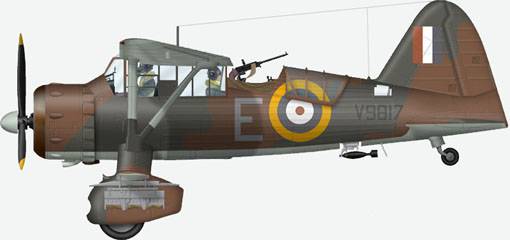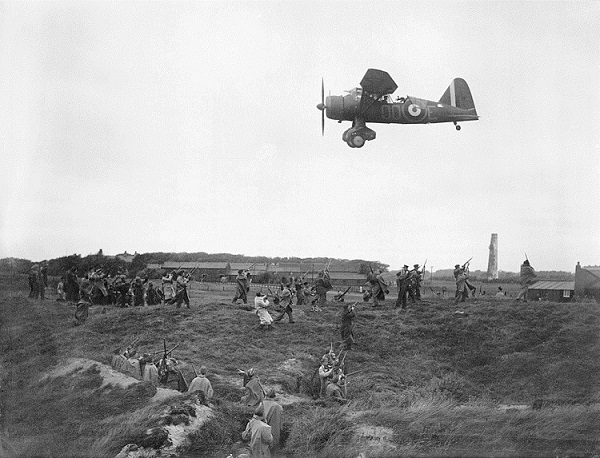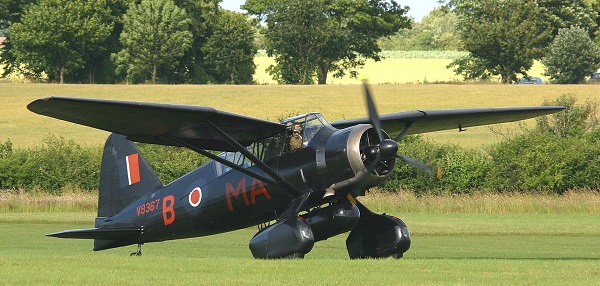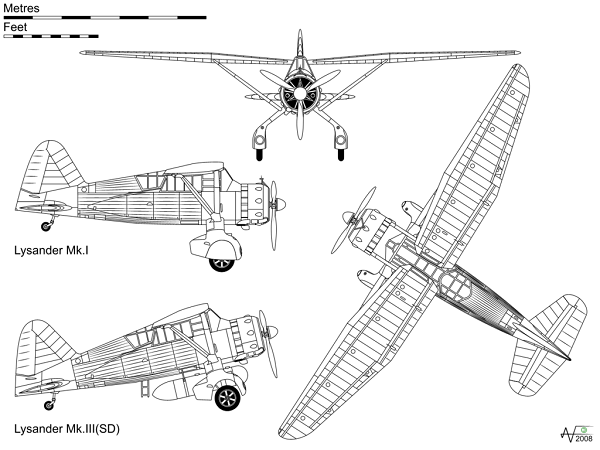

In 1934 the Air Ministry issued Specification A.39/34 for an army co-operation aircraft to replace the Hawker Hector. Initially Hawker Aircraft, Avro and Bristol were invited to submit designs, but after some debate within the Ministry, a submission from Westland was invited as well. The Westland design, internally designated P.8, was the work of Arthur Davenport under the direction of "Teddy" Petter. It was Petter's second aircraft design and he spent considerable time interviewing Royal Air Force pilots to find out what they wanted from such an aircraft. Less clear was whether he or the pilots understood the army co-operation role and what the army wanted, which was tactical reconnaissance and artillery reconnaissance capability – photographic reconnaissance and observation of artillery fire in daylight – up to about 15,000 yards (14 km) behind the enemy front. The result of Petter's pilot enquiries suggested that field of view, low-speed handling characteristics and STOL performance were the most important requirements.[citation needed]

Davenport and Petter designed an aircraft to incorporate these features with unconventional results. The Lysander was powered by a Bristol Mercury air-cooled radial engine and had high wings and a fixed conventional landing gear mounted on an innovative inverted U square-section tube that supported wing struts at the apex, was in itself resilient, and contained (internal) springs for the faired wheels. The large streamlined spats also each contained a mounting for a Browning machine gun and for small, removable stub wings that could be used to carry light bombs or supply canisters.[1] The wings had a reverse taper towards the root, which gave the impression of a bent gull wing from some angles, although the spars were straight. It had a girder type construction faired with a light wood stringers to give the aerodynamic shape. The forward fuselage was duralumin tube joined with brackets and plates, and the after part was welded stainless steel tubes. Plates and brackets were cut from channel extrusions rather than being formed from sheet steel. The front spar and lift struts were extrusions. The wing itself was fabric covered, and its thickness was maximized at the lift strut anchorage location, similar to that of later marks of the Stinson Reliant high-winged transport monoplane.
Despite its appearance, the Lysander was aerodynamically advanced; being equipped with fully automatic wing slots and slotted flaps[2] and a variable incidence tailplane. These refinements gave the Lysander a stalling speed of only 65 mph (104 km/h, 56.5 knots).[3] It also featured the largest Elektron alloy extrusion made at the time: the one-piece frame already mentioned that supporting the wings and wheels. (This was a feature of British-built aircraft only – Canadian-built machines had a conventionally fabricated assembly due to the difficulties involved in manufacturing such a large extrusion.) The Air Ministry requested two prototypes of the P.8 and the competing Bristol Type 148, quickly selecting the Westland aircraft for production and issuing a contract in September 1936.
Read more
Crew: One, pilot
Capacity: 1 passenger (or observer)
Length: 30 ft 6 in (9.29 m)
Wingspan: 50 ft 0 in (15.24 m)
Height: 14 ft 6 in (4.42 m)
Wing area: 260 ft² (24.2 m²)
Empty weight: 4,365 lb (1,984 kg)
Max. takeoff weight: 6,330 lb (2,877 kg)
Powerplant: 1 × Bristol Mercury XX radial engine, 870 hp (649 kW)
Maximum speed: 212 mph (184 knots, 341 km/h) at 5,000 ft (1,520 m)
Range: 600 miles (522 nmi, 966 km)
Service ceiling: 21,500 ft (6,550 m)
Climb to 10,000 ft (3,050 m): 8 min
Take-off run to 50 ft (15 m): 305 yards (279 m)
Guns: Two forward-firing .303 in (7.7 mm) Browning machine guns in wheel fairings and two more for the observer
Bombs: Four 20 lb (9 kg) bombs under rear fuselage and 500 lb (227 kg) of bombs on stub wings if fitted




